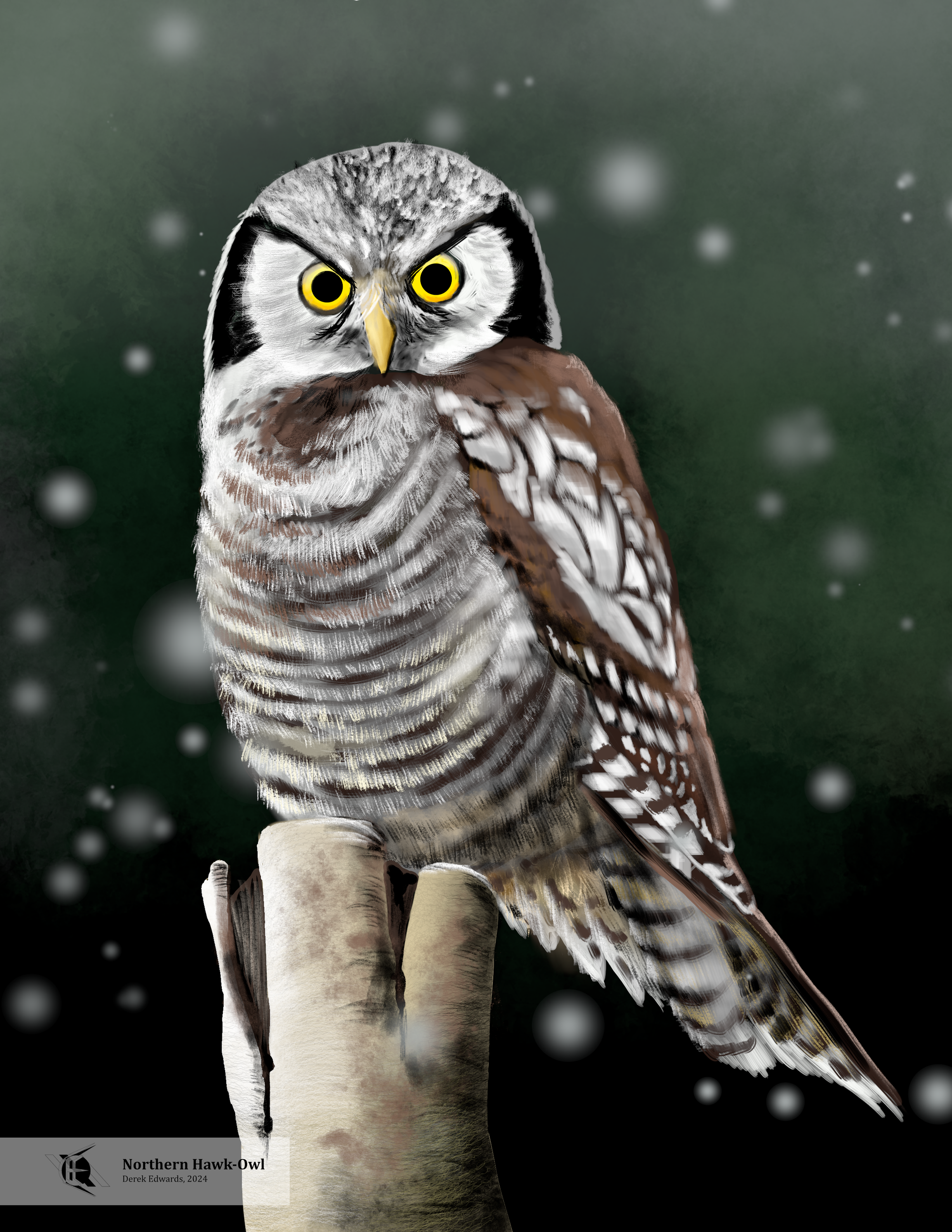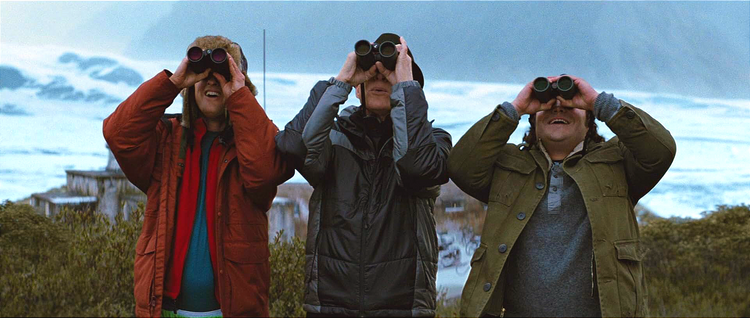
Running Commentary 1/22/2024
Hello,
It's been incredibly chilly where I live lately. I haven't been able to get out birding much in the harsh weather. I have had tree sparrows coming by my window, which has been nice.
Anyway...
Eating...
Garlic Bites
This recipe has its origins in America's Test Kitchen's Bread: Illustrated's recipe for garlic knots, and in the breadsticks at a local pizza place. Bread Illustrated suggested the bold move of mixing all the garlic from making the garlic butter in with the dough, which, who knows, might be good, but it's not what I was looking for in garlic knots. And, honestly, if I'm making them I'm not gonna bother tying knots. So here's my, rather modified, recipe for garlic bites. They were so tasty I didn't even get a picture; they look like bits of bread soaked in butter.
Ingredients:
Bread Bites:
- 2 cups all-purpose flour
- 1 1/2 tsp yeast
- 1 tsp salt
- 3/4 cup water
- 2 TBSP butter, melted
- 1/2 tsp olive oil
Toss in:
- 9 cloves garlic, minced
- 1 TBSP + 3 TBSP olive oil
- 1 tsp water
- 8 TBSP butter
- 1/2 cup Parmesan cheese, grated
- 1 tsp fresh herbs, chopped (Use oregano, basil, or parsley, according to taste
Procedure:
Bread Bites
- Mix flour, yeast, and salt together in the bowl of a stand mixer.
- Whisk together water, oil, and melted butter
- While using a dough hook on low speed, add the wet mixture slowly and mix until a cohesive dough forms and all dry flour is incorporated. Increase speed to medium-low and knead for 8 minutes.
- Transfer dough to a lightly floured counter and hand-knead to form a smooth, round ball.
- Place the dough in a large container, cover tightly with plastic wrap, and let rise for 1-2 hours, until doubled in size.
- Once raised, punch the dough down and form it into a 6"x12" rectangle.
- Using a pizza cutter or sharp knife, cut the dough into roughly 1"x3" pieces.
- Arrange on a baking sheet, cover loosely, and allow to raise for another hour.
- While the dough raises, prepare the garlic butter and preheat the oven to 500° F.
- Bake the bread for 8 minutes
- Immediately out of the oven, toss the bread in a large bowl with garlic butter, 3 TBSP olive oil, Parmesan cheese, and herbs.
- Allow to sit for at least 10 minutes, then serve digging bread out from the bottom first.
Garlic Butter
- In a small pan, cook garlic in 1 TBSP olive oil and water, until fragrant and lightly browned.
- Add butter, cut into small chunks, and melt in with garlic, stirring thoroughly.

Bird of the Week
It is always disagreeable to an author to come forward when he has little of importance to communicate to the reader, and on no occasion have I felt this more keenly than on the present, when introducing to your notice an Owl, of which the habits, although unknown to me, must be highly interesting... 1
So opened J. J. Audubon in his own account to accompany his own illustration of this week's bird, the Northern Hawk-owl. In the intervening centuries between then and now, the challenge to write a few paragraphs about this bird has not lessened, I'm afraid.
Found in northern latitudes just below the Arctic circle, all the way around the world, the northern hawk-owl is a unique owl, the only member of its genus. It is named for its resemblance to a hawk, what with its long tail and diurnal habits. That's right, this is no night owl. Like its neighbors the snowy owl and the short-eared owl, the hawk-owl hunts in daylight, something in long supply during the summer months in the far north. During the winter, it wanders south, not really migrating as such, but seeking food that becomes unavailable as the tundra freezes over.
And that's about it. That's what's known about hawk-owls. Their nesting has not been well-studied, and their population is difficult to count with any accuracy; most knowledge about them is anecdotal, rather than systematic. There's just not much I can write about it. 2,3 (Audubon spent most of the rest of his space explaining where to go to shoot them, but shooting owls isn't generally allowed anymore.)
The northern hawk-0wl, for how little it's been studied, is a prized sighting among birders, especially in the northern U.S. were it occasionally arrives in the winter. It's striking appearance and relative comfort around people make it a relatively easy spot if it's around, while its rarity makes it an impressive boast. The one news story I could find is a bit of a sad one: a Washington state property owner allegedly shot a hawk-owl that was drawing unwanted photographers.4 Such assassinations are rare but such invasions by birders are unfortunately less so, so let me take the space I have left to encourage you all that birding does not excuse trespassing. Do what you will in public parks, nature reserves, and roadsides, but otherwise it's probably best that a bird you can't get to doesn't get gotten to.
Linnaeus first named the northern hawk-owl Strix ulula, or the "howling owl", though having heard recordings, I might have gone with "yodeling owl".5 Since then, the bird has been reclassified to the monotypic genus Surnia, by M. J. C. Savigny, a French scientist who also studied the nature of Egypt on behalf of Napoleon. That name comes from "surnion", a name for an unknown owl in an obscure Latin text.6 The term "northern" is to differentiate this from the Australasian boobooks of the genus Ninox, which are sometimes also called hawk-owls.
- Audubon, John James. “Hawk Owl,” The Birds of America https://www.audubon.org/birds-of-america/hawk-owl.
- Duncan, Patricia A. (April 3, 2013) “Status Report on the Northern Hawk Owl, Surnia Ulula." CW66-901/1992E-PDF. Government of Canada Publications https://publications.gc.ca/site/eng/9.913970/publication.html.
- BirdLife International (BirdLife International). “IUCN Red List of Threatened Species: Surnia Ulula.” IUCN Red List of Threatened Species, August 13, 2021. https://www.iucnredlist.org/species/22689189/206518616.
- Cudmore, Becca. “A Rare Owl Turned up Dead—Are Birders to Blame?” Audubon, February 21, 2023. https://www.audubon.org/news/a-rare-owl-turned-dead-are-birders-blame.
- Peyton, Leonard J. “ML49544 - Northern Hawk Owl (American)." Macaulay Library. April 29, 1970. https://macaulaylibrary.org/asset/49544.
- Jobling, J. A. (editor). The Key to Scientific Names in Birds of the World (S. M. Billerman et al. editors), Cornell Laboratory of Ornithology, Ithaca.
Curation Links
The Long Shadow of Checks | Patrick McKenzie, Bits about Money
Checks were the first form of non-cash money, so they’ve become the high spot up out of the mud upon and around which modern banking has been built, out of necessity.
The Violin Doctor | Elly Fishman, Chicago Magazine
Profile of John Becker, a world-class luthier, that is, a craftsman who works on violins and other stringed instruments. He’s the guy you get when you need your Stradivarius fixed.
It's not just you. LinkedIn has gotten really weird. | Rob Price, Business Insider
“With 950 million members as of July, LinkedIn is poised to soon have a billion users, joining a rarefied three-comma club with the likes of Facebook, Instagram, and TikTok. Started in 2003 as little more than an online repository for résumés, the Microsoft-owned behemoth has recently transformed. Not only are there more users to post, but they're posting much more often. The number of LinkedIn posts grew 41% from 2021 to 2023. But it's the content of the posts that's shifted the most, turning LinkedIn into one of the world's strangest social networks.”
Arbitrium | Anjali Sachdeva, Tor
[FICTION] “Vashti is a pathogenic diplomat—an ambassador to the world of viruses, whom she communicates with through a machine that can translate their chemical signals into images, tastes, smells, sounds, and memories. She begins a negotiation between the US Government and a diplomatic contingent from Arenavirus, a virus which has just begun spreading a deadly mutation in Florida. If Vashti is successful, she and Arena will reach a diplomatic agreement; if not, the Arenavirus infection will continue to spread, and humans will have to race to try to find a vaccine or treatment. As she navigates the diplomatic discussions, Vashti is also trying to connect with her daughter Alma, who lives on the other side of the country in a technology-averse commune. By the time the negotiation ends, Vashti discovers that Arenavirus have learned some impressive and deadly tricks from their interactions with humans.”
See the full archive of curations on Notion



Member Commentary